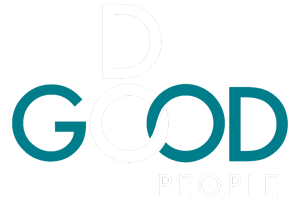Leadership must step in not just to communicate the broad vision of the company, but to ensure employees have the tools, the knowledge, and perhaps most importantly, the motivation to integrate sustainability into their work.
Reproduce this content:
Table of Contents

From boardroom goals to company-wide engagement
Sustainability can no longer be just a high-level corporate commitment, it needs to be a company-wide movement. While the C-suite plays a critical role in setting sustainability goals, those goals risk remaining solely theoretical unless employees at all levels are actively engaged.
Without engagement, even the most ambitious sustainability strategies can have minimal real-world impact. And this is a consequence of the sustainability strategy feeling disconnected from employees’ daily responsibilities.
If people don’t see how their actions contribute to broader sustainability goals, they’re unlikely to participate meaningfully, and can even end up understanding the introduction of ESG concerns into their daily operations as a burden.
Do your employees know how to contribute to the ESG strategy?
This is where leadership must step in, not just to communicate the broad vision of the company, but to ensure employees have the tools, the knowledge, and perhaps most importantly, the motivation to integrate sustainability into their work.
A top-down approach alone won’t work; sustainability needs to be embedded into the company’s culture, making every employee an active participant in the process.
Why leaders should build a company-wide sustainability culture
C-suite leadership in sustainability should go way beyond setting ambitious and regulation-friendly targets, their role is to transform sustainability into a core part of the company’s DNA by integrating it into decision-making, or ensuring it aligns with business objectives
However, their most important role is making it clear to everyone in the company that sustainability is a shared responsibility. But this cannot be achieved solely through mandates or policies; sustainability leaders set the tone for the entire organization, which means they should showcase personal commitment and inspire by example.

But how can the C-suite make sustainability goals practical and relevant for employees’ to embed these into their daily workflows?
There a few ways to tackle this question, on the one hand, this could mean incorporating sustainability metrics into performance evaluations, or, on a more practical side, providing training that links sustainability to job functions.
All in all, clear guidelines, easy-to-use digital tools, and regular feedback can help employees see their impact and stay motivated and engaged, after all, the goal is to embed sustainability into everyday decisions rather than treat it as an add-on.
Technology as a game-changer for employee engagement
As we said before, C-suite leaders should aim to transform sustainability into relevant and tangible goals for all employees, and for this purpose, digital tools are key.
When employees have clear, accessible platforms to track progress, collaborate, and receive real-time feedback, sustainability stops being an abstract concept and becomes part of daily work. In other words, technology bridges the gap between strategy and execution.
Data and gamification further enhance engagement by making sustainability efforts more interactive and rewarding. Real-time tracking of energy savings, waste reduction, or sustainable sourcing helps employees see the direct impact of their actions.
Furthermore, gamification taps into natural motivation drivers, turning sustainability into a shared, goal-oriented effort rather than just another corporate directive.
Understanding the psychology of change in sustainability
Measuring success: from vision to tangible impact
Last but not least, we cannot ignore the fact that leadership should not only build motivation, but also make sure this feeling stands in the long run. Sustainability has to become a lasting part of business strategy, and the C-suite should ensure progress is continuously measured and communicated.
Setting clear KPIs helps keep sustainability efforts on track and make everyone accountable for them. Also, transparent reporting not only reinforces commitment but also builds trust among employees, which is very much needed. Without measurable outcomes, even the best sustainability initiatives risk losing momentum.
However important measuring and tracking progress is, it is crucial to also celebrate it and recognize teams and individuals who contribute to sustainability goals, so as to foster a sense of ownership and enhance motivation.
Building employee engagement across the company
In DoGood, we aim to simplify the complex web of sustainability objectives for companies by offering a platform that translates the high-level ESG (Environmental, Social, Governance) objectives into actionable tasks for every single employee.
Then, each employee not only knows how to make an impact but also feels empowered to contribute meaningfully to the greater sustainable strategy.
No more vague directives. No confusion. DoGood automates the process, making it seamless for the workforce to know precisely what steps to take.







